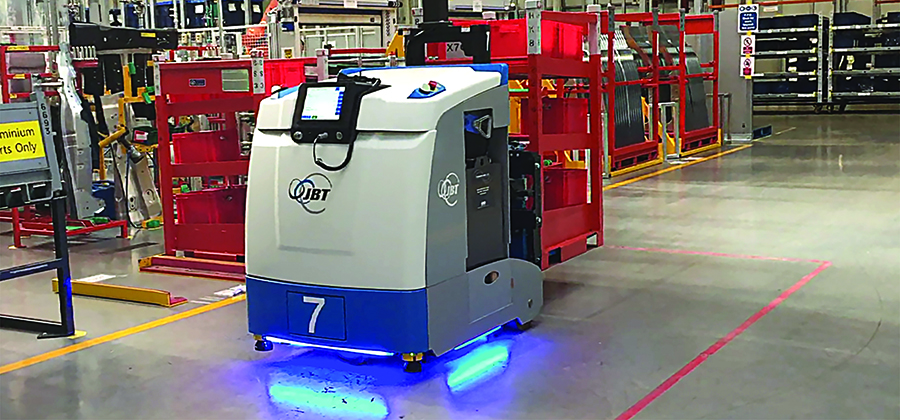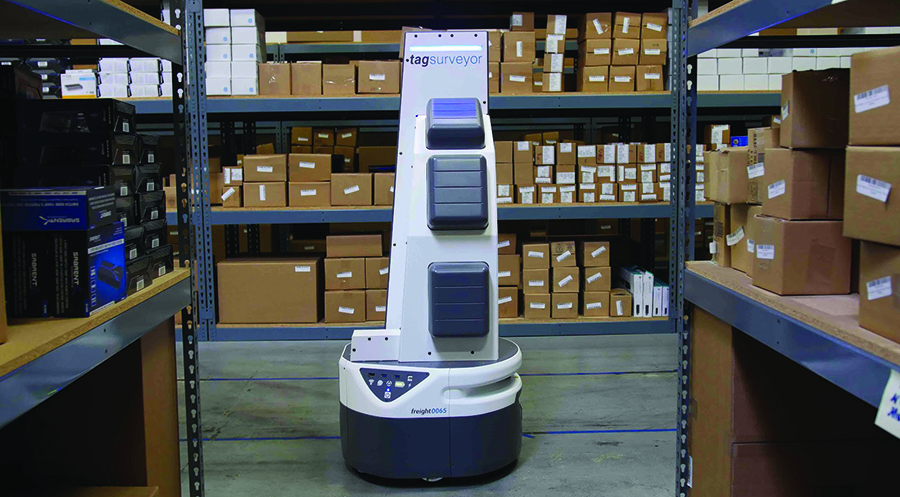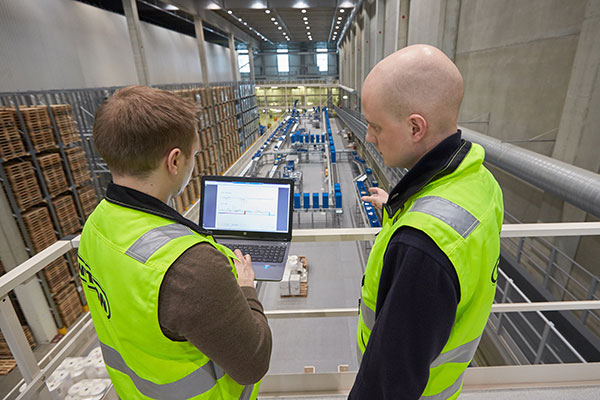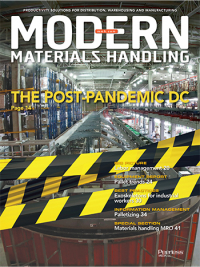MRO: The challenges of moving from preventative to predictive maintenance
A grounding in data analytics and its importance to proper maintenance is especially critical with advanced equipment.
Maintenance is in a time of transition. For years, two models have predominated for most maintenance organizations: They either ran equipment to failure, especially non-essential machinery, or put in a preventative maintenance program. While those models are still state-of-the-art at most companies, the next step is predictive maintenance, or using sensors to collect real-time operating data and artificial intelligence and machine learning to analyze the data and predict when a piece of equipment needs maintenance. It promises to revolutionize the way we operate systems, improving up time and reducing the overall cost of ownership. But, where are we in that transition?
That question was at the heart of “How sensors, data analytics and artificial intelligence are enabling predictive maintenance practices,” a panel discussion moderated by Bob Trebilcock, executive editor of Modern Materials Handling. Sponsored by the National Center for Supply Chain Automation (NCSCA), the panel was part of the third-annual National Symposium for Supply Chain Automation, held in Atlanta in March 2020.
Initially, four panelists were scheduled to speak, but due to Covid-19 travel bans two withdrew. Ultimately, Phil Gilkes, regional maintenance manager eastern U.S. of Dollar Tree-Family Dollar, was on scene. Phil Jones, director of supply chain engineering at Target called in to the event.
Here’s what they had to say:
Trebilcock: As the title suggests, next-generation technologies such as sensors, data analytics and artificial intelligence (AI) are changing the way supply chains operate, and that’s impacting the MRO and maintenance side of things, too.
The goal with the next-gen technologies is predictive maintenance based on the condition of the equipment. That’s getting away from preventive maintenance based on a schedule. In other words, don’t strive to do maintenance every 2,000 hours but when there is a signal that there is a problem. This is where industry hopes to move going forward.
What does predictive maintenance mean to Target and Dollar Tree-Family Dollar? And, what are your plans going forward?
Jones: Just to give you an overview, Target has 41 supply chain facilities supplying more than 1,900 retail stores. We have 700 maintenance technicians and that number should go to 900 in a couple of years. We also have more than 700 general maintenance people.
We look at predictive maintenance as the last step in a maintenance continuum. At the base is reactive maintenance, which leads into calendar- or interval-based maintenance. Level two is usage-based maintenance, which uses meters to track activities such as run time.
Level three is condition-based maintenance that uses sensors to provide indicators that track performance of a particular asset. And the final step is predictive maintenance, where you are able to partner AI with condition-based maintenance to predict future breakdowns.
Target’s maintenance practices are split between calendar-based and usage-based maintenance. But, we are doing our first experiment with AI and sensors with our sorter system.
Gilkes: My view on predictive maintenance is very similar to what Phil has just described. I would actually use much the same progression of different levels, too. And, we are now moving toward taking the maintenance decision away from people and using next-gen tools to tell you when to maintain a piece of equipment.

Predictive maintenance of automated equipment requires a higher level of expertise by technicians.
We have 25 DCs supplying more than 15,200 retail stores and use four levels similar to Phil’s to manage maintenance. Preventive maintenance is our standard now. But we don’t always have access to the equipment on schedule. That means we are actually working on break/fix maintenance in many cases.
We are very low on the rungs of the ladder to predictive maintenance. However, suppliers are now embedding sensors and indicators in new equipment being installed. This is helping to get us on the road to predictive maintenance. So, we really are on the lowest rung of the ladder.
Trebilcock: We had hoped that C&S Wholesale Grocers could be with us today. However, I have some knowledge of the direction of their maintenance program. As a starting point, they have decided to focus on lubrication and be the best in the business at that in their maintenance program. And once they have that down, they will start looking at retrofitting with sensors and such to begin to predict when maintenance is required. How do you relate to that?
Gilkes: I think, Bob, what we’re talking about here is creating a model that allows companies to compare data against a model. When technicians do their daily walk through, they’ll look, they’ll touch, they’ll smell. They use their senses to determine what’s going on with the equipment today. And, they’ll do it all again tomorrow. That’s not exactly a measurement, but they are the next step.
So, the predictive angle is to measure today and tomorrow and the day after. Then compare and interpolate and extrapolate information to determine which way it is going. With any of these predictive technologies, there has to be a foundation of data analytics and a model to compare against.
Trebilcock: What’s been holding you back in predictive maintenance? And, what are the obstacles to moving ahead?
Jones: I’ll talk about several different things here.
The first is the change curve for our maintenance technicians. They’ve been following schedule-based maintenance for more than 30 years. So, there’s a routine. And, it’s very uncomfortable for them to switch to a scheme that is not predictable as to when the work will be done. They need to develop a comfort level that they can trust the data and that the equipment will not break down early.
The second point is the challenge of integration of equipment and systems that get information from the machines and feeds that data into a database. This has been a technology shortfall that we’ve only recently been able to make headway on.
The third part is the training necessary for technicians as they start to use instruments and diagnostic tools to determine when equipment is not functioning as expected. That requires a higher level of overall knowledge and tools. And, we have to change our expectations for our technicians to have that higher-level knowledge.
That requires months of intensive effort and up to millions of interactions and teaching points to get to a confidence level that is high enough to accept the results. That requires a lot of data. We are at a two sigma level of accuracy and need to get to a five sigma level for the AI tool to actually prompt actions without human intervention. That is very aspirational for us, and we are no where near being able to execute that now.
Gilkes: We are very similar to what Phil was just talking about. The obstacle of transitioning to predictive is the technology itself and the requirements of technicians to support that technology. In preventive maintenance, technicians are very comfortable with hand tools.
When you move into predictive, you are incorporating other features into the system with a level of complexity significantly above that of wrenches and screwdrivers. They need to have good computer skills and proficiency with a range of instruments. Getting there is a big challenge.
If we get to this level, employee retention is the next challenge. A technician may have this advanced skill set, but it’s not used every day. So, there’s a real challenge keeping the brains of high-level technician stimulated enough to make the job interesting enough for them. To deal with the monotony, we try to cycle them through the different areas of the business, lift trucks, conveyors and such, to mix it up for them.
Trebilcock: What kind of a training and advancement program do you have for your technicians?
Gilkes: We use three categories: technician, senior technician and multi-skilled technician. The idea is to create a career progression that they can aspire to. We use a set curriculum with modules they can work through and achieve a test score at a certain level. When they get to the multi-skilled level they start to learn other skills such as leadership and communication that can take them to the next step to become a shift supervisor or even a facility manager.
Jones: At Target, we have a lot of internal training. It’s a learning roadmap for all of the equipment at our buildings. But our biggest challenge here is onboarding new technicians especially with a shortage of people. So, we have gone to a four-tiered technician process that enables us to start apprenticeship programs.
We’re looking here to work with local community colleges, too. We see the certified technician program that is being introduced (see story pg. 42) as a positive here. We expect it will accelerate the rate that we can bring on new technicians. We also expect that it will give non-technicians at our facilities a chance to pursue that as a new career path.
Trebilcock: So, what is your starting point to move to predictive maintenance? And, what tools will it require that you don’t have?

Gilkes: Going from preventive to predictive maintenance is not a step function. It’s a process. A journey over time.
We run a pilot program at one facility or even one type of equipment within a facility. You start with deciding what you want to measure and the type of sensor needed. Then, you have to connect sensors and link them to a supervisory control system. This in itself is a level of complexity many technicians would not have previously seen.
So, start small. Try different things in a pilot. Create a base model. And then collect and analyze data and compare it to real life. That tells you if your model is actually accurate.
Trebilcock: What are the skills that the technician of the future needs to have? And, how do community colleges fit in here?
Jones: We need good solid programs that ensure graduates have a very solid grounding including the scientific principles involved. Mechatronics programs are a baseline to build on. We need technicians to be able to use diagnostic tools better. And, finally, they need to feel comfortable with software and robust databases and statistical mechanisms to determine acceptable and unacceptable levels of equipment performance.
Gilkes: Just understanding the fundamentals and even the theory are a good starting point for technicians coming to us. A grounding in data analytics and its importance is increasingly important. Too often, we have good technicians, but they don’t know how to troubleshoot. If they understand the basics, that would go a long way to being successful in the facility. Understanding not just computers but human machine interfaces will be helpful, too. I could go on with more specifics, but you get the idea here, I’m sure.
Trebilcock: Thanks, gentlemen.

Article Topics
MRO News & Resources
Avidbots showcases autonomous cleaning robots Traka exhibits modular lockers MRO Survey: Finding and keeping the best technicians Maintenance, Repair and Operations: Understanding the true condition of the equipment Newly formed Bison combines AMETEK DFS and Bison Gear and Engineering Corp. Building (and maintaining) your maintenance, repair and operations (MRO) tech workforce The power side of lift truck battery and charger maintenance More MROLatest in Materials Handling
Beckhoff USA opens new office in Austin, Texas Manhattan Associates selects TeamViewer as partner for warehouse vision picking ASME Foundation wins grant for technical workforce development The (Not So) Secret Weapons: How Key Cabinets and Asset Management Lockers Are Changing Supply Chain Operations MODEX C-Suite Interview with Harold Vanasse: The perfect blend of automation and sustainability Consultant and industry leader John M. Hill passes on at age 86 Registration open for Pack Expo International 2024 More Materials HandlingSubscribe to Materials Handling Magazine

Find out what the world's most innovative companies are doing to improve productivity in their plants and distribution centers.
Start your FREE subscription today.
April 2024 Modern Materials Handling

Latest Resources












